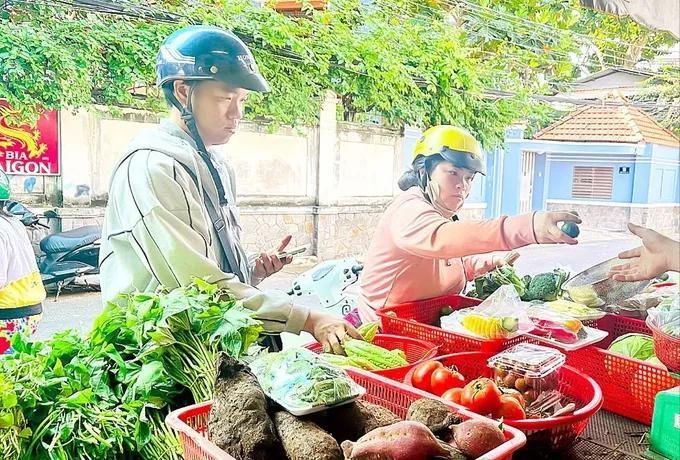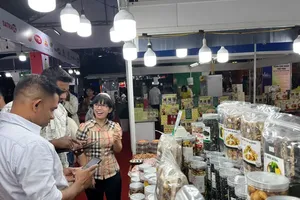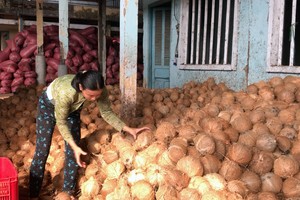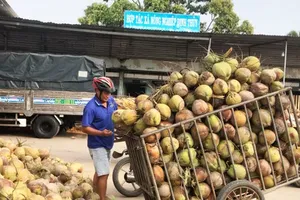
Vegetable prices surge
For more than a week, Ho Chi Minh City's market has seen sharp price increases in leafy vegetables, leaving both sellers and buyers struggling.
At retail markets such as Hoa Hung, Ban Co, and Tan Thoi Hiep, the prices of greens like green cabbage, bok choy, spinach, and lettuce have risen by 20 percent to 40 percent in just one week. Some items have even doubled compared with early October; for instance, Da Lat thorn lettuce now costs VND80,000– VND95,000 per kilogram, and spinach sells for VND30,000– VND40,000 per kilogram.
At Vo Thi Sau Market in Vung Tau Ward, only a few gourds and pumpkins remained at the stall of vendor Nguyen Van Ly. He moans that wholesale prices are high, supply is low, and buyers are holding back, sellers really don’t know how to cope.
At Hoc Mon wholesale market on the morning of November 13, prices continued to rise sharply. Da Lat thorn lettuce reached VND55,000 per kilogram, more than double mid-October levels while spinach increased 2.5 times, reaching VND15,000 per kilogram.
According to vendors, the main cause is prolonged heavy rain and high tides, which have flooded vegetable-growing regions across Southern Vietnam and provinces near Ho Chi Minh City, drastically reducing output. Vegetable volumes arriving at Thu Duc, Hoc Mon, and Binh Dien wholesale markets have dropped significantly.
Rising vegetable prices have also pushed up the cost of meals sold at food stalls. Portions of rice, noodle soup, or Vietnamese pork and shrimp noodle soup are now VND5,000–VND10,000 higher than a few months ago. “A rice plate used to cost VND35,000. Now we must charge VND40,000–VND45,000 to cover higher transport, utility, and rental costs”, said an owner of a rice shop on Nguyen Thi Minh Khai Street in Ho Chi Minh City’s Ban Co Ward.
Economists note that market demand is showing signs of slowing, particularly for fast-moving consumer goods and affordable dining; categories that account for a large share of urban household spending. Many families are tightening budgets, planning meals carefully, eating out less, and cutting nonessential expenses.
Retail outlets are strengthening price stabilization
To support purchasing power, major retail chains have launched coordinated efforts to stabilize prices and stimulate consumption. Saigon Co.op has introduced a large year-end promotion campaign, offering 5 percent to 50 percent discounts on thousands of essential items and expanding its retail network for better public access. The company recently opened Co.opmart Thong Nhat at Bcons City Mall in Dong Hoa Ward featuring self-service areas, dining, and digital services—designed for modern urban consumers and expanding its footprint in eastern HCMC.
Meanwhile, MM Mega Market Vietnam has launched the “Daily Good Prices” program covering more than 2,000 essential items especially vegetables, meats, seasonings, and dried foods with discounts from 10 percent to 35 percent to ease cost pressures for consumers and small businesses. The GO! retail system is implementing its “Buy More, Save More” campaign with discounts up to 50 percent on household goods, processed foods, necessities, and school supplies. It is also increasing vegetable and fresh-meat sourcing from stable farming areas such as Lam Dong and Tay Ninh to stabilize supply. Retailers such as Satra and Aeon Mall are also offering good-value shopping programs with 10 percent–40 percent discounts.
From now until the end of the year, the Department of Industry and Trade, in cooperation with the Ho Chi Minh City Department of Tourism and trade associations, will organize a series of trade-and-tourism promotion events to boost consumption and showcase the city’s signature products. These include the Supply–Demand Connection Week in Vung Tau Ward, the Bird’s Nest Festival on Nguyen Hue Walking Street, the Food Festival, the Rice Fiber Festival, and the Ho Chi Minh City Tourism Week.
Deputy Director Nguyen Nguyen Phuong of the Ho Chi Minh City Department of Industry and Trade said that from now through year’s end, the industry will continue implementing stabilization programs and concentrated promotional activities, mobilizing around 10,000 participating enterprises. These measures play an important role in controlling inflation, protecting consumer purchasing power, and creating positive momentum for the city’s economy during the holiday season.













)

)








